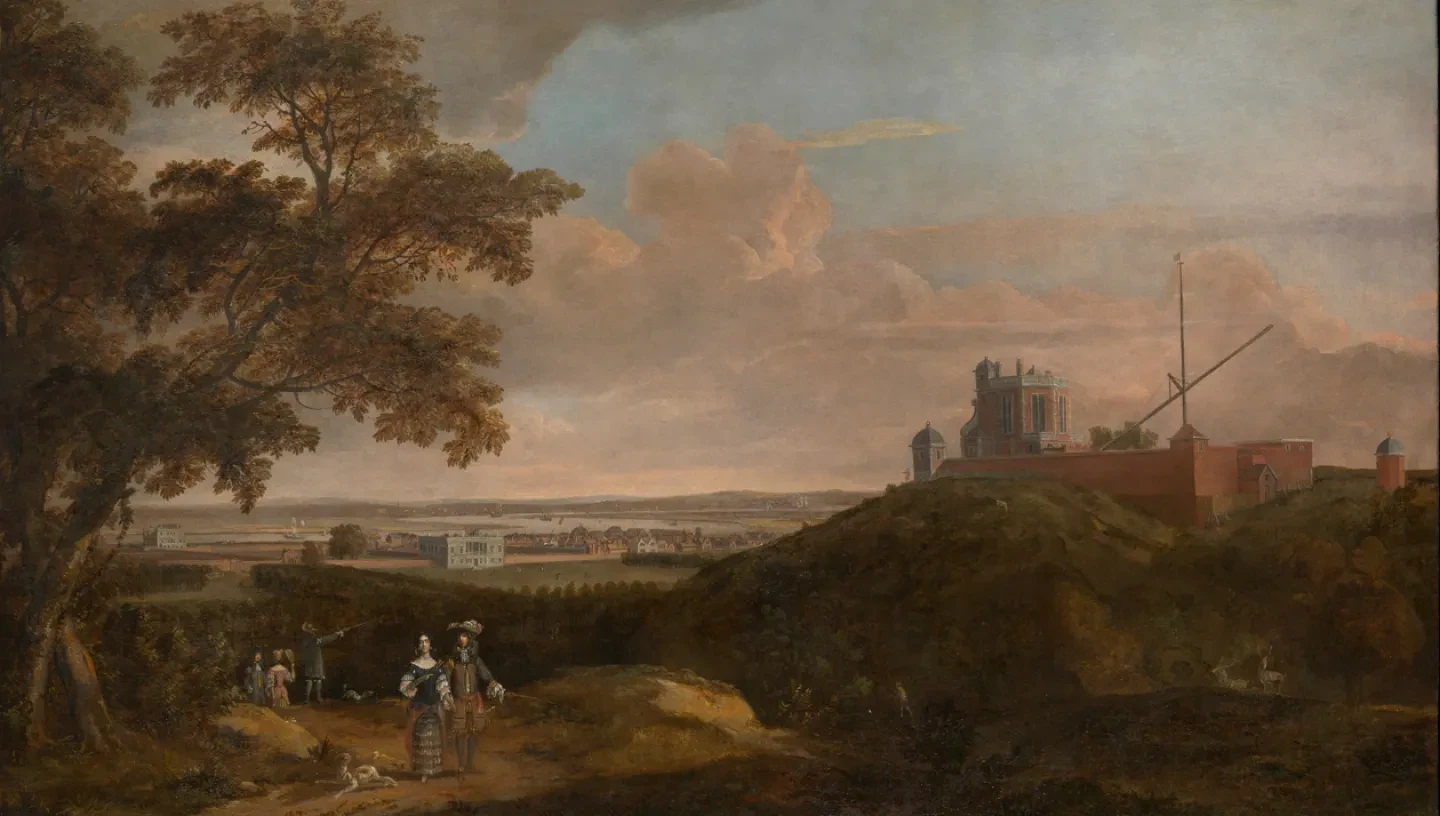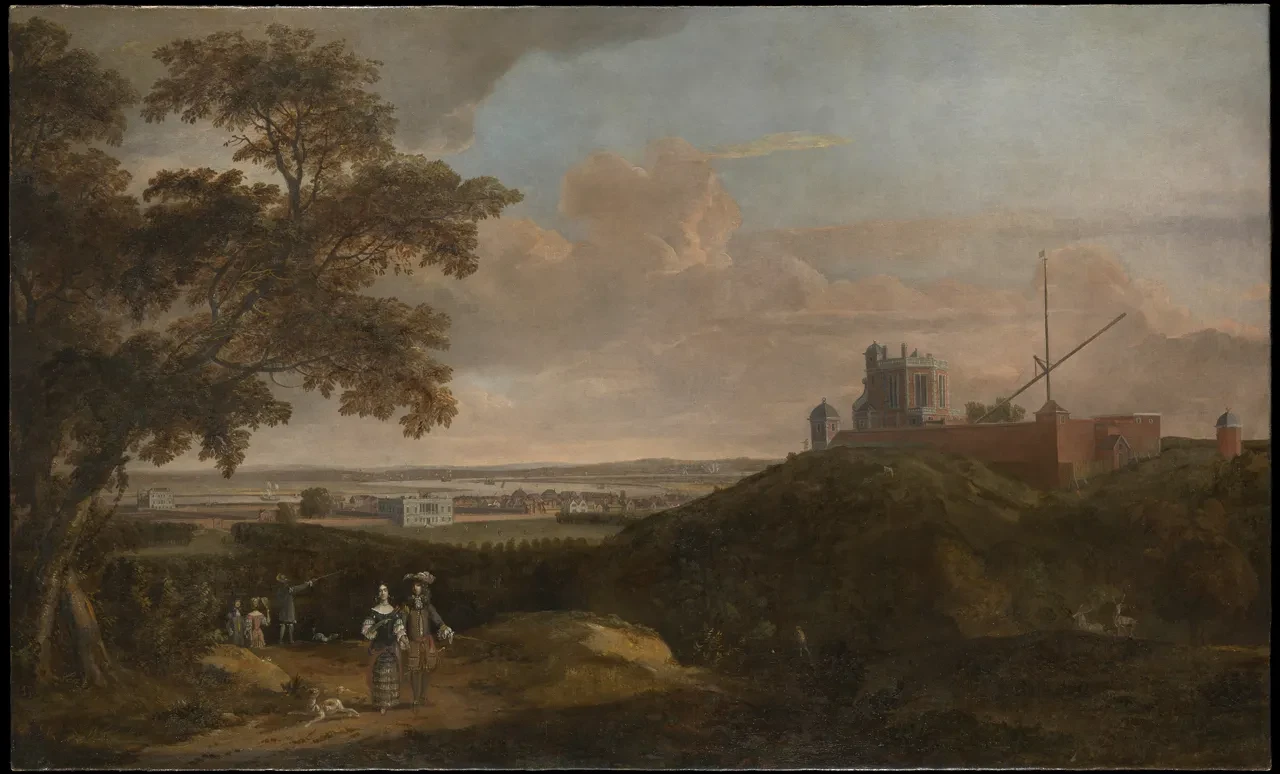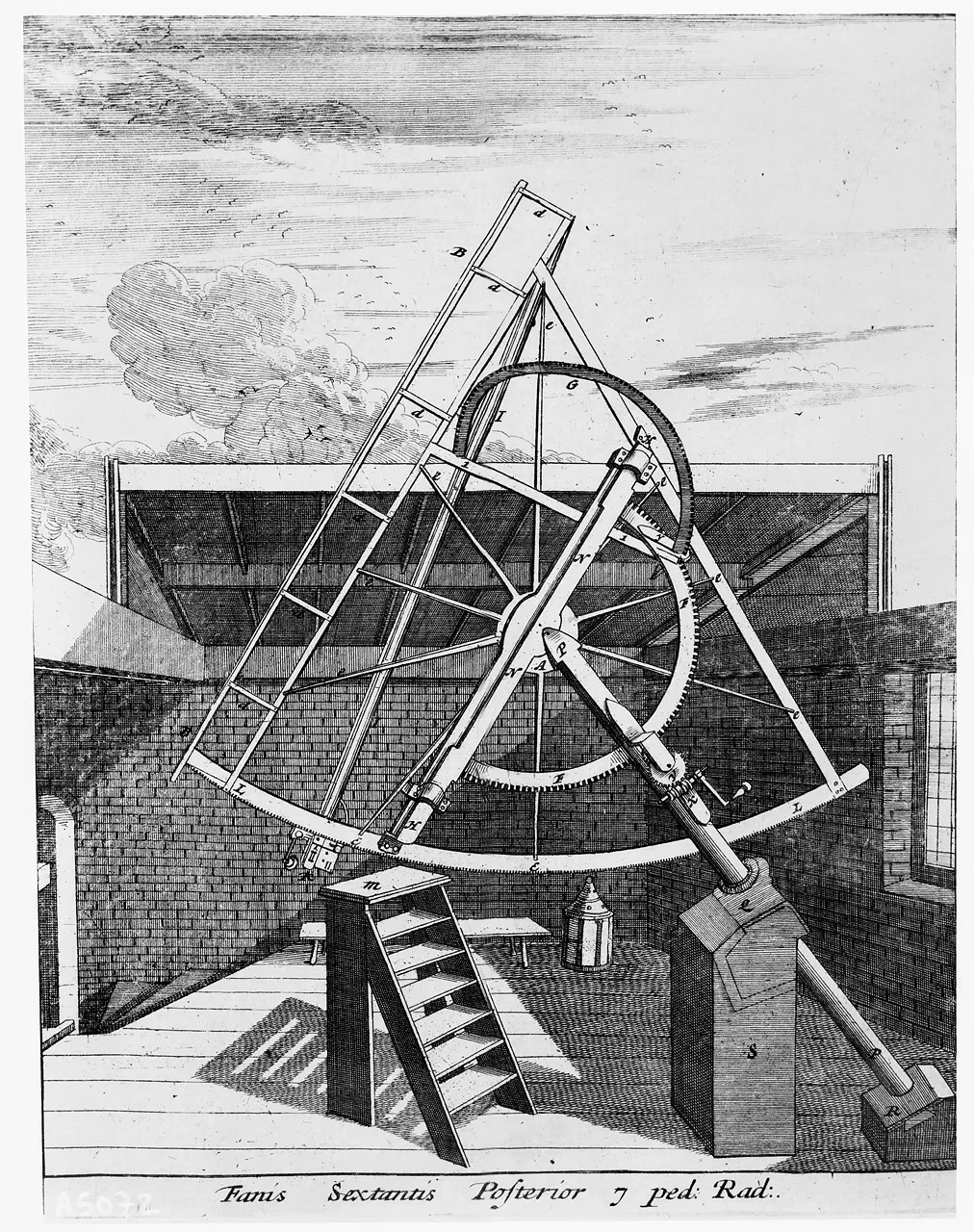
Curator of the Royal Observatory, Louise Devoy, looks at Samuel Pepys's links to our site here in Greenwich.

This painting in the Royal Museums Greenwich collection is a great example of how Samuel Pepys (1633–1703) took a keen interest in both the naval and scientific work undertaken at various sites across Greenwich.
The artist has chosen to depict a view of the Royal Observatory, Britain’s first scientific institution, as seen from Crooms Hill, on the western side of Greenwich Park, during the late 1690s. We can see a cluster of buildings surrounded by an imposing garden wall.
eyes are drawn to the red-brick building in the centre which was designed by Christopher Wren twenty years earlier to provide for ‘the observator's habitation, and a little for pomp'. The building originally comprised of a set of ground floor dwelling rooms topped by the ‘Great Star Chamber’ whose tall windows and walls were specifically designed to accommodate the necessary instruments and long pendulum clocks.
The first ‘observator’ was the Astronomer Royal, John Flamsteed (1646–1719) who took up residence in the summer of 1676 and over the next forty years dedicated himself to measuring the positions of the stars to help produce accurate star charts for navigators at sea.
Beyond his work on positional astronomy, Flamsteed liked to try out new ideas in astronomy and instrument design and it’s one of these projects which we can see in the courtyard to the south of Wren’s building.
Thanks to Pepys, Flamsteed was able to acquire an 80-foot mast which was no longer required by the Royal Navy in March 1676 which proved to be an ideal structural support for his 60-foot long optical tube. At this time, telescope lenses suffered from achromatic and spherical aberration whereby objects appeared distorted and surrounded by a halo of colours.
Before the invention of the achromatic lens by the English mathematician Chester Moor Hall in 1729, the best approach for reducing these effects was to increase the optical focal length of the telescope, resulting in large instruments such as the one depicted in the painting.
Flamsteed was keen to use the instrument to observe the motion of Jupiter’s moons as part of the quest to improve navigation at sea but we only have one surviving record of a disappointing observation made on 24 October 1677.
Over a decade later, Flamsteed reported that the mast telescope started ‘to sway to and fro’, despite the calm weather conditions. Amid concerns that the structure might crash down onto the surrounding buildings, such as Flamsteed’s Quadrant House, the mast telescope was eventually dismantled during the late 1690s.

Pepys continued to correspond with Flamsteed during this period, asking for his advice and encouraging him to publish his star catalogue. The surviving letters also reveal how Pepys visited the observatory to enjoy the company of Flamsteed and his wife Margaret, thanking them later for their 'Crowd of Favours, both Intellectual and Culinary, at my late Visit...heighten'd, by the Conversacion and Kindness of your Excellent Lady' (Pepys to Flamsteed, 5 July 1697).




